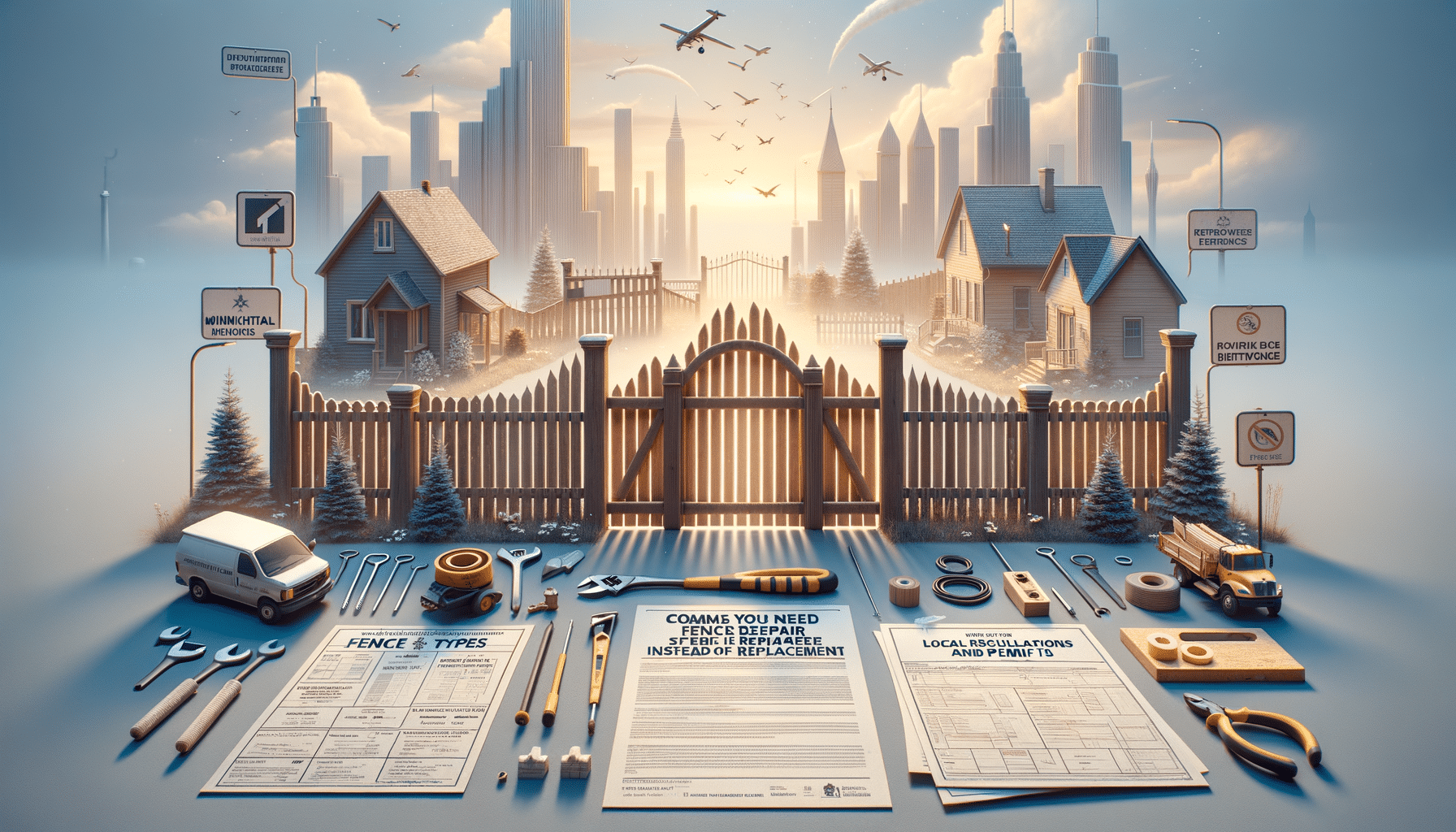
The Ultimate Guide to Fence Installation and Repair Services
Common Fence Types and Materials
Fences serve as a crucial element in defining property boundaries, enhancing privacy, and adding aesthetic value to homes and businesses. The choice of fence type and material can significantly impact its functionality and longevity. Understanding the differences among the various options is essential for making an informed decision.
Wooden fences are a classic choice, known for their natural beauty and versatility. They can be customized in terms of height, style, and color, making them suitable for a wide range of applications. However, they require regular maintenance to prevent rot and insect damage.
Vinyl fences, on the other hand, offer a low-maintenance alternative to wood. They are resistant to weathering, insects, and decay, making them a durable option. Although the initial cost may be higher, their longevity often justifies the investment.
Metal fences, including aluminum and wrought iron, are renowned for their strength and security. Aluminum is lightweight and resistant to rust, while wrought iron provides a traditional and elegant look. Both options require minimal upkeep, though wrought iron may need occasional painting to prevent rust.
Chain-link fences are among the most cost-effective and durable options, commonly used for security purposes. They are easy to install and maintain, though they may not offer much in terms of privacy without additional slats or coverings.
Each material has its pros and cons, and the right choice depends on factors such as budget, desired aesthetics, and the specific needs of the property.
Signs You Need Fence Repair Instead of Replacement
Fences, like any other structure, are subject to wear and tear over time. Knowing when to repair rather than replace can save both money and resources. Here are some signs that indicate a fence might need repair instead of a complete overhaul.
One of the most common indicators is minor damage, such as small cracks or holes in wooden panels. These can often be patched or filled without needing to replace the entire section. Similarly, rust spots on metal fences can be sanded down and treated with rust-resistant paint.
If the fence is leaning or sagging, it may be due to loose or damaged posts. Reinforcing or replacing these posts can often restore the fence to its original position. In some cases, simply tightening screws or bolts can resolve the issue.
For vinyl fences, look for signs of warping or discoloration. While these issues can sometimes indicate the need for replacement, minor warping can often be corrected with heat application, and discoloration may be resolved with a thorough cleaning.
Ultimately, the decision between repair and replacement depends on the extent of the damage and the overall condition of the fence. Regular inspections and maintenance can help extend the life of a fence, ensuring it remains functional and attractive for years to come.
Local Regulations and Permits
Before embarking on a fence installation or repair project, it is essential to understand the local regulations and permit requirements that may apply. These rules can vary significantly depending on the area and can affect the type, height, and placement of fences.
Many municipalities have zoning laws that dictate the maximum height of fences, especially in residential areas. These regulations are often in place to maintain neighborhood aesthetics and ensure visibility for drivers and pedestrians. It’s crucial to check with the local zoning office to determine any restrictions that apply to your property.
In addition to height restrictions, there may be rules regarding the materials used, particularly in historic districts or areas with specific architectural guidelines. Some communities have homeowner associations (HOAs) that impose additional rules on fence design and color to maintain a cohesive look throughout the neighborhood.
Obtaining the necessary permits is another critical step. Failing to secure the proper permits can result in fines or the need to alter or remove the fence. The permitting process typically involves submitting plans or drawings of the proposed fence and may require inspections during and after construction.
Understanding and adhering to local regulations not only ensures compliance but also helps prevent potential disputes with neighbors or local authorities. It’s always a good idea to consult with a professional or contact the local building department for guidance before starting any fence project.
Choosing the Right Fence for Your Needs
Selecting the right fence involves considering various factors beyond just materials and design. The primary purpose of the fence, whether for privacy, security, or aesthetic appeal, will largely dictate the most suitable options.
For those seeking privacy, solid panel fences, such as wooden or vinyl options, are ideal. They offer a barrier that blocks sightlines and can also help reduce noise. Privacy fences are particularly popular in suburban areas where homes are closely spaced.
Security is another common reason for installing a fence. Metal fences, like chain-link or wrought iron, provide a sturdy barrier that can deter intruders. Adding features like barbed wire or security cameras can enhance the protective benefits further.
For decorative purposes, picket fences or ornamental metal fences can add charm and character to a property. These fences are often used in front yards to enhance curb appeal without obstructing views.
When choosing a fence, it’s also important to consider the climate and environmental conditions. For instance, wooden fences may not be ideal in areas with high humidity or frequent rainfall, while metal fences can be vulnerable to rust in coastal regions.
Ultimately, the right fence should meet your specific needs while complementing the overall look of your property. Consulting with a professional can help ensure you make the best choice for your situation.
Maintenance Tips for Long-Lasting Fences
Once a fence is installed, proper maintenance is key to ensuring its longevity and appearance. Different materials require different care, but there are general tips that can help keep any fence in top condition.
Regular inspections are essential for identifying and addressing issues early. Look for signs of damage, such as rotting wood, rust, or loose posts, and take corrective action promptly. Early intervention can prevent minor problems from becoming major repairs.
Cleaning is another crucial aspect of fence maintenance. For wooden fences, this might involve power washing to remove dirt and mildew, followed by sealing or staining to protect against moisture. Vinyl fences can be cleaned with a simple mixture of soap and water, while metal fences may need occasional repainting to prevent rust.
Trimming vegetation around the fence can help prevent damage from overhanging branches or invasive roots. Keeping the area clear also improves airflow, reducing the risk of moisture buildup and rot.
Finally, consider applying protective treatments as needed. For example, a weatherproof sealant can protect wooden fences from the elements, while a rust-resistant coating can extend the life of metal fences.
By following these maintenance tips, you can ensure your fence remains a valuable asset to your property for many years.


